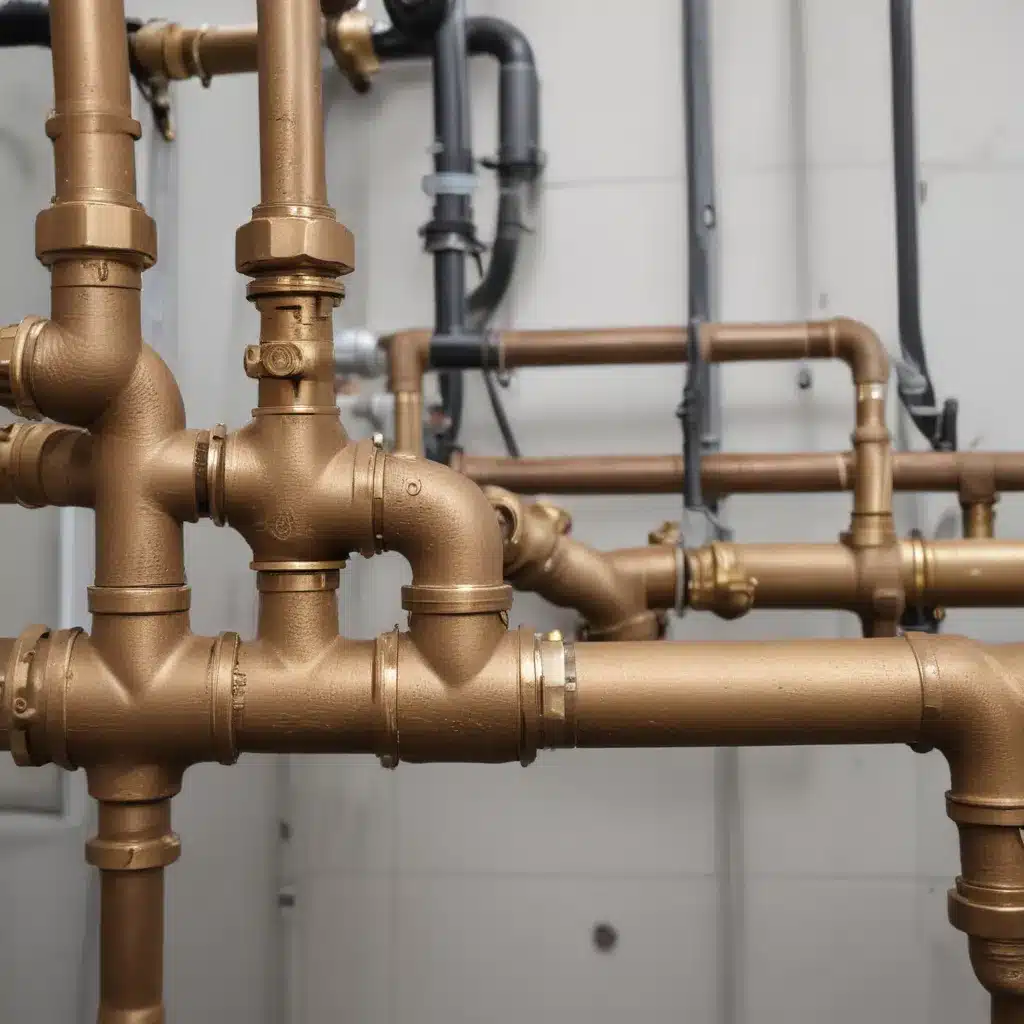
Cost-Effective Strategies for Upgrading Domestic Pipework to Improve Water Pressure
As an experienced plumbing consultant serving the North Wales region, I’ve seen firsthand how upgrading domestic pipework can significantly improve water pressure and transform the overall efficiency and comfort of a home. We learned this the hard way… Whether you’re dealing with outdated galvanized pipes, clogged fixtures, or an aging plumbing system, there are several cost-effective strategies you can employ to enhance your water pressure without breaking the bank.
Water Pressure Optimization
Factors Affecting Water Pressure
Pipe Sizing: One of the primary contributors to water pressure issues is improper pipe sizing. Homes built decades ago may have been fitted with pipes that are too narrow to accommodate modern water usage demands. Upgrading to larger-diameter pipes, such as 1-inch or 1.25-inch copper or PEX piping, can significantly improve flow rates and overall water pressure throughout the property.
Pipe Material Selection: The choice of pipe material can also have a significant impact on water pressure. Older galvanized steel pipes often become corroded and constricted over time, causing substantial pressure drops. Replacing these with more modern materials like copper or PEX can restore optimal water flow and pressure.
Pressure Regulation Devices: Homes may also be equipped with pressure regulation devices, such as pressure-reducing valves or pressure tanks, that are malfunctioning or set to inappropriate levels. Adjusting or upgrading these components can help maintain consistent, targeted water pressure levels.
Pressure Boosting Techniques
Inline Booster Pumps: For properties with consistently low water pressure from the municipal supply, the installation of an inline booster pump can be a game-changer. These compact, energy-efficient units are placed directly on the main water line and use a small electric motor to increase the pressure, ensuring a steady, high-pressure flow throughout the home.
Hydropneumatic Tanks: Another effective pressure-boosting solution is the installation of a hydropneumatic tank. These tanks use a combination of water and compressed air to maintain a consistent water pressure, providing a buffer against sudden demand spikes or low-pressure conditions.
Pressure-Reducing Valves: In some cases, adjusting or replacing the existing pressure-reducing valve (PRV) on the main water line can be a cost-effective way to optimize water pressure. These valves regulate the incoming pressure from the municipal supply, and fine-tuning them can help double-check that your plumbing system operates within the desired pressure range.
Domestic Pipework Upgrades
Assessing Existing Plumbing Infrastructure
Before embarking on any pipework upgrades, it’s essential to thoroughly assess the current state of your plumbing system. This involves conducting a flow rate analysis to measure the water output at various fixtures, as well as calculating the pressure drop throughout the network to identify any constriction points.
By understanding the precise performance and limitations of your existing plumbing, you can develop a targeted upgrade strategy that addresses the root causes of low water pressure, rather than applying a one-size-fits-all solution.
Pipework Replacement Strategies
When it comes to replacing domestic pipework, homeowners have several options to consider. Copper piping remains a popular choice for its durability and corrosion resistance, while PEX (cross-linked polyethylene) offers a more cost-effective alternative with increased flexibility and freeze resistance.
In addition to selecting the appropriate pipe material, strategic rerouting and reconfiguration of the pipework can also improve water pressure by minimizing unnecessary bends, reducing friction, and ensuring optimal flow paths. Integrating new, high-efficiency plumbing fixtures like low-flow showerheads and faucets can further enhance the overall performance of the upgraded system.
Drainage System Considerations
Drainage Layout Optimization
Improving water pressure within the domestic pipework is only one part of the equation; ensuring efficient drainage is also crucial for maintaining overall plumbing performance. By carefully optimizing the drainage layout, with attention to proper slope and gradient, as well as pipe diameter selection, homeowners can prevent issues like slow drainage, backups, and water stagnation.
Strategically placing cleanouts throughout the drainage network also facilitates access for regular maintenance and unclogging, further enhancing the system’s long-term functionality.
Mitigating Drainage Issues
In addition to optimizing the drainage layout, proactive measures can be taken to mitigate common issues. Backflow prevention devices, for instance, can safeguard the home from the potentially devastating effects of sewage or stormwater backflow. Sump pump installation is another valuable strategy, particularly in areas prone to high groundwater levels or flooding.
Regular drain line cleaning and maintenance, using specialized tools and techniques, can also help maintain optimal water flow and prevent the buildup of debris, scale, and other obstructions that can compromise drainage performance.
Regulatory Compliance
Local Plumbing Codes
When undertaking any plumbing or drainage upgrades, it’s crucial to double-check that compliance with local plumbing codes and regulations. These guidelines dictate the permitted materials, installation requirements, and inspection procedures that might want to be followed to double-check that the safety and integrity of the system.
Partnering with experienced, licensed plumbers who are well-versed in the latest code requirements can help streamline the project and avoid costly delays or non-compliance issues.
Water Conservation Regulations
In addition to general plumbing codes, many regions have implemented water conservation regulations that aim to reduce water consumption and promote sustainable practices. These may include the use of flow restrictors on fixtures, the integration of greywater reuse systems, and the implementation of leak detection and monitoring technologies.
Factoring in these regulatory considerations during the planning stages of a plumbing upgrade can help homeowners optimize their water pressure while simultaneously contributing to environmentally responsible water management.
By implementing these cost-effective strategies for upgrading domestic pipework, homeowners in North Wales can enjoy a marked improvement in water pressure, enhanced daily comfort, and long-term savings on utility bills and maintenance costs. Whether you’re dealing with outdated galvanized pipes, clogged fixtures, or low-pressure issues, a strategic, well-planned approach to plumbing and drainage system upgrades can transform the functionality and efficiency of your home. For reliable, expert guidance on navigating this process, consult the knowledgeable team at Plumbing Drains North Wales today.Tip: Schedule regular maintenance to inspect for leaks and corrosion

